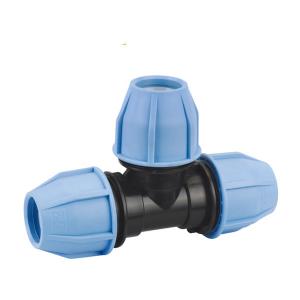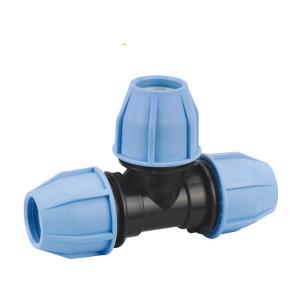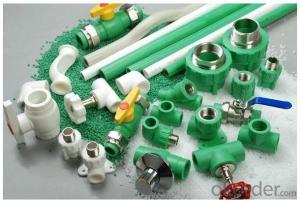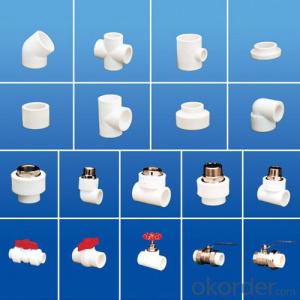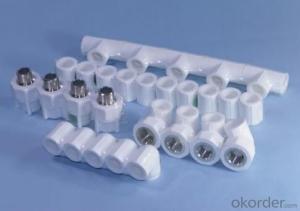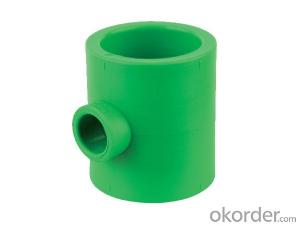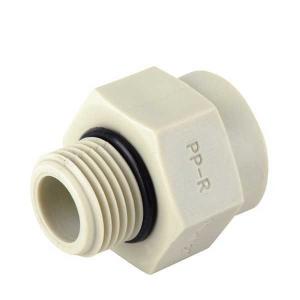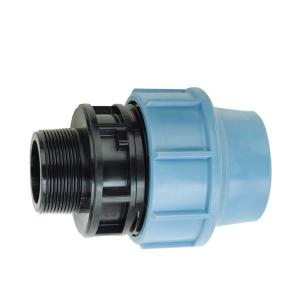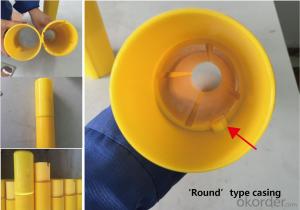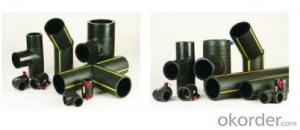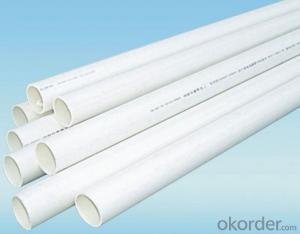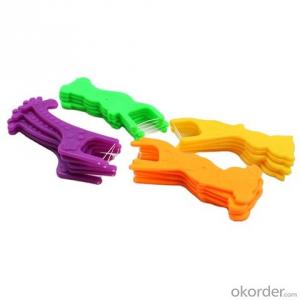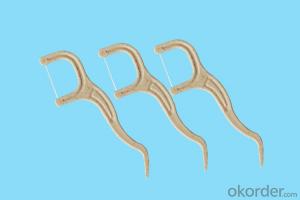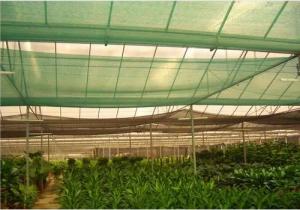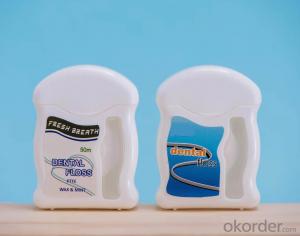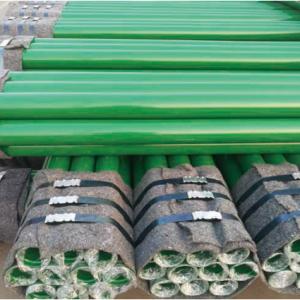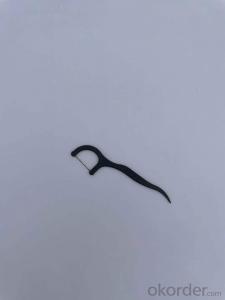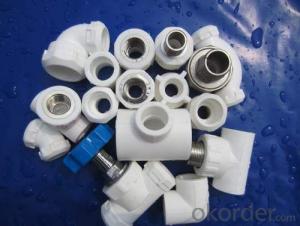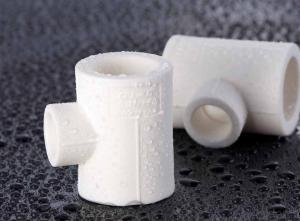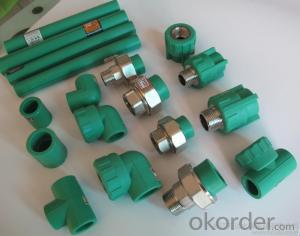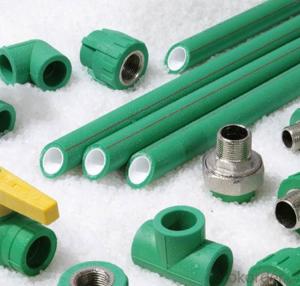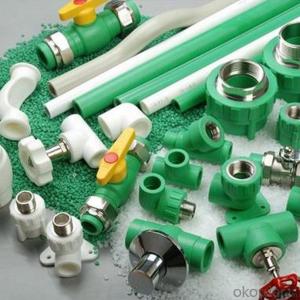High Quality 90 Tee 90 Tee 90 Tee
- Loading Port:
- Ningbo
- Payment Terms:
- TT or LC
- Min Order Qty:
- 1000 watt
- Supply Capability:
- 100000 watt/month
OKorder Service Pledge
Quality Product, Order Online Tracking, Timely Delivery
OKorder Financial Service
Credit Rating, Credit Services, Credit Purchasing
You Might Also Like
 1.It is used in industrial fields, agriculture and garden irrigation 2. Beauty appearance.3.Thermal insulation and energy saving.4. Easy installation 5.excellent heat resistance and pressure resistance 6. affordable price
1.It is used in industrial fields, agriculture and garden irrigation 2. Beauty appearance.3.Thermal insulation and energy saving.4. Easy installation 5.excellent heat resistance and pressure resistance 6. affordable price
1.Material:Random Polypropylene(Hyosung R200P);
2.ISO9001&ISO14001;
3.Standard:GB/T 18742.3-2002, DIN8077/8078;
4.OEM also ok
- Q:Do plastic pipe fittings require any special tools for removal?
- Yes, plastic pipe fittings typically require special tools such as a pipe wrench or a specific fitting removal tool for their removal.
- Q:Do plastic pipe fittings require any special protection against sunlight?
- Yes, plastic pipe fittings generally require special protection against sunlight. Exposure to sunlight over prolonged periods can cause degradation and weakening of the plastic material, leading to cracks, discoloration, and reduced lifespan. Protective measures like covering the fittings with UV-resistant materials or storing them in shaded areas can help prevent sun damage and maintain their integrity.
- Q:How do you connect plastic pipe fittings to ABS pipes?
- To connect plastic pipe fittings to ABS pipes, you can use ABS cement or solvent cement specifically designed for ABS pipes. Apply the cement to the outside of the ABS pipe and the inside of the plastic fitting, then quickly join the two pieces together and hold them firmly for a few seconds to ensure a strong bond.
- Q:Are plastic pipe fittings resistant to hydraulic fluid?
- Yes, plastic pipe fittings are generally resistant to hydraulic fluid.
- Q:Are plastic pipe fittings resistant to ultraviolet (UV) rays?
- Yes, plastic pipe fittings can be resistant to ultraviolet (UV) rays depending on the type of plastic used. Materials like PVC (polyvinyl chloride) and CPVC (chlorinated polyvinyl chloride) are inherently resistant to UV radiation. However, other types of plastic may require UV stabilizers or coatings to enhance their UV resistance.
- Q:Are plastic pipe fittings resistant to ozone?
- Yes, plastic pipe fittings are generally resistant to ozone.
- Q:How do you remove a plastic pipe fitting?
- To remove a plastic pipe fitting, you can follow these steps: 1. Turn off the water supply: Before removing any pipe fitting, it is essential to turn off the water supply to prevent any leaks or accidents. 2. Prepare the area: Clear the surrounding area of any obstructions or debris that may hinder your work. 3. Identify the type of fitting: Determine the type of plastic fitting you are dealing with. Common types include compression fittings, push-to-connect fittings, or threaded fittings. 4. Compression fittings: For compression fittings, you will need two adjustable wrenches. Use one wrench to hold the fitting in place while using the other wrench to turn the nut counterclockwise until it comes off. 5. Push-to-connect fittings: Push-to-connect fittings typically have a release mechanism built into them. Locate the release collar near the fitting, then push it down firmly towards the pipe while pulling the pipe away from the fitting. This will release the connection. 6. Threaded fittings: Threaded fittings require the use of a pipe wrench or adjustable wrench. Place the wrench on the fitting's body or hex section and turn it counterclockwise to loosen and remove the fitting. 7. Inspect and clean: Once the fitting is removed, inspect the pipe and fitting for any damage or debris. Clean the pipe end and the inside of the fitting to ensure a proper connection when reinstalling it or replacing it with a new fitting. Remember to exercise caution and follow safety guidelines when working with plumbing systems. If you are unsure or encounter any difficulties, it is advisable to consult a professional plumber.
- Q:Are plastic pipe fittings suitable for underground installations?
- Yes, plastic pipe fittings are suitable for underground installations. They are commonly used due to their durability, resistance to corrosion, and ability to withstand underground pressure and environmental conditions. Additionally, plastic pipe fittings are lightweight, making them easier to handle and install in underground applications.
- Q:Can plastic pipe fittings be used for fuel transfer systems?
- No, plastic pipe fittings should not be used for fuel transfer systems. Plastic is not compatible with fuel and can degrade, leak, or cause a potential fire hazard. It is recommended to use fittings made from materials specifically designed for fuel transfer, such as metal or specialized fuel-resistant plastics.
- Q:What are the common testing methods for plastic pipe fittings?
- Common testing methods for plastic pipe fittings include hydrostatic pressure testing, burst testing, tensile testing, impact testing, and dimensional testing. These tests are conducted to ensure the quality, strength, durability, and overall performance of the fittings.
1. Manufacturer Overview |
|
|---|---|
| Location | |
| Year Established | |
| Annual Output Value | |
| Main Markets | |
| Company Certifications | |
2. Manufacturer Certificates |
|
|---|---|
| a) Certification Name | |
| Range | |
| Reference | |
| Validity Period | |
3. Manufacturer Capability |
|
|---|---|
| a)Trade Capacity | |
| Nearest Port | |
| Export Percentage | |
| No.of Employees in Trade Department | |
| Language Spoken: | |
| b)Factory Information | |
| Factory Size: | |
| No. of Production Lines | |
| Contract Manufacturing | |
| Product Price Range | |
Send your message to us
High Quality 90 Tee 90 Tee 90 Tee
- Loading Port:
- Ningbo
- Payment Terms:
- TT or LC
- Min Order Qty:
- 1000 watt
- Supply Capability:
- 100000 watt/month
OKorder Service Pledge
Quality Product, Order Online Tracking, Timely Delivery
OKorder Financial Service
Credit Rating, Credit Services, Credit Purchasing
Similar products
New products
Hot products
Related keywords
